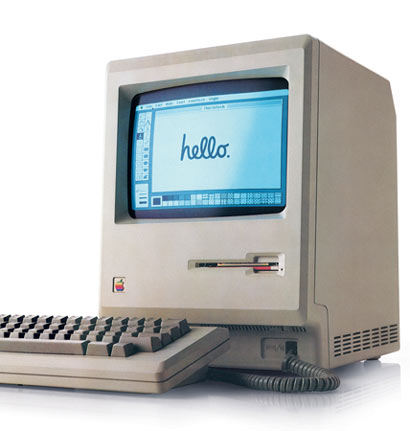I had the experience: 20 minutes with an iphone. Thanks to Gary Marsden for the opportunity.
People have said “oh yeah the iphone is really good.” Some have said “It’s really REALLY good.” But I thought they were just Apple groupies.
They didn’t convey just how good it is. It’s astonishing. My jaw dropped. And when my wife tried it, her jaw dropped too.
Now I’m an Apple sceptic. I find Apple devices rarely live up to the hype. So this is not an Apple-worship post.
This post is about how the iPhone is ushering in a dramatic shift in the world of user experience.
Adding more feel
There’s a term that bobs around in the world of technology: “look and feel”. Look gets most of the attention, and often, feel is something we struggle to define.
That’s because most applications feel the same. We click buttons, we slide scrollbars, we press keys. Nothing has really changed in years. And we reached the point where we all forgot to look for alternatives.
What’s special about the iPhone is the feel. You use it by making gestures, and touching it with several fingers at once. You flick at long lists to make them scroll fast. You pinch photos to make them smaller and stretch maps to zoom in. You don’t just interact with an iPhone. You conduct it. You play it. You treat the things on the screen like real-world objects (slightly magical ones). Using it is a great experience and I really urge you to seek one out and have a go.
(Yes I know it’s not perfect. It’s no good if you need to operate it by touch alone, it requires two hands, and it requires us to use our thick and clunky fingers. But that doesn’t stop it being amazing).
With this new kind of user experience, we’re inching up through the spectrum – towards fuller, more engaging, experiences. We’re still miles from the rich, real-life experience of a fast drive in a luxury car. But we’re closer than we were.

That’s cute, you say. It takes feel to a new level. But so what?
Well, this new kind of user experience will have a very real impact on our lives and the digital technology business.
A step-change
Think of it this way. In 1984 there was a small grey box with a mouse and some basic GUI capabilities: the Apple Mac. Humble, yes. But it was the first commercially successful GUI computer. 23 years later hundreds of millions of GUI operating systems are installed across the planet. And that has enabled us to build at least a couple of new industries, and transform the global economy. That’s right – we couldn’t have done it with just the DOS prompt.

The history of the internet is another great example. Only when the first graphical web browser, Mosaic, brought images and clickable hypertext to our screens, did the internet finally go mainstream.
A change in the way we use computers – allowing us to do the same things better, and tackle new things we haven’t yet imagined. Explosive growth. Life- and economy-transforming results. The iPhone is the beginning of another round of that.
What kind of company that can make things like that?
As Harry Brignull and Bill Buxton have both pointed out, Apple stood on the shoulders of giants to make the iPhone. Multitouch research has been going on since the early eighties. The games industry has been making use of gesture and natural physics for years now. And smart phones have been around for a long while.

What Apple did, though, was to throw out one heavily-entrenched assumption: that phones had a keypad, a yes, a no, and two softkeys. Once they did that, they gave themselves a new opportunity to pull together a range of ideas and technologies into an amazing device.
For that they deserve enormous respect. Very few organisations in the world can throw out that much inherited wisdom, and demonstrate that much innovativeness, foresight and guts. Many wish they could. But for most, the risk seems too great, the politics and processes are too stodgy, the desire to just get something “good enough” out there is too strong. (The trick: follow a user-centred design process to de-risk your innovation projects.)
Who dares wins…
Well, it looks like Apple will sell 6% of the coming year’s smartphones. And Microsoft, will sell 5%, even though they have been in the market for years with Windows Mobile and Pocket PC. That tells us something.
But whatever happens to the iPhone, we can be sure that multi-touch and gestural interfaces are going to change the experience of using computers forever.
(Thanks to Ann Light and Martin Storey for their contributions to this post).